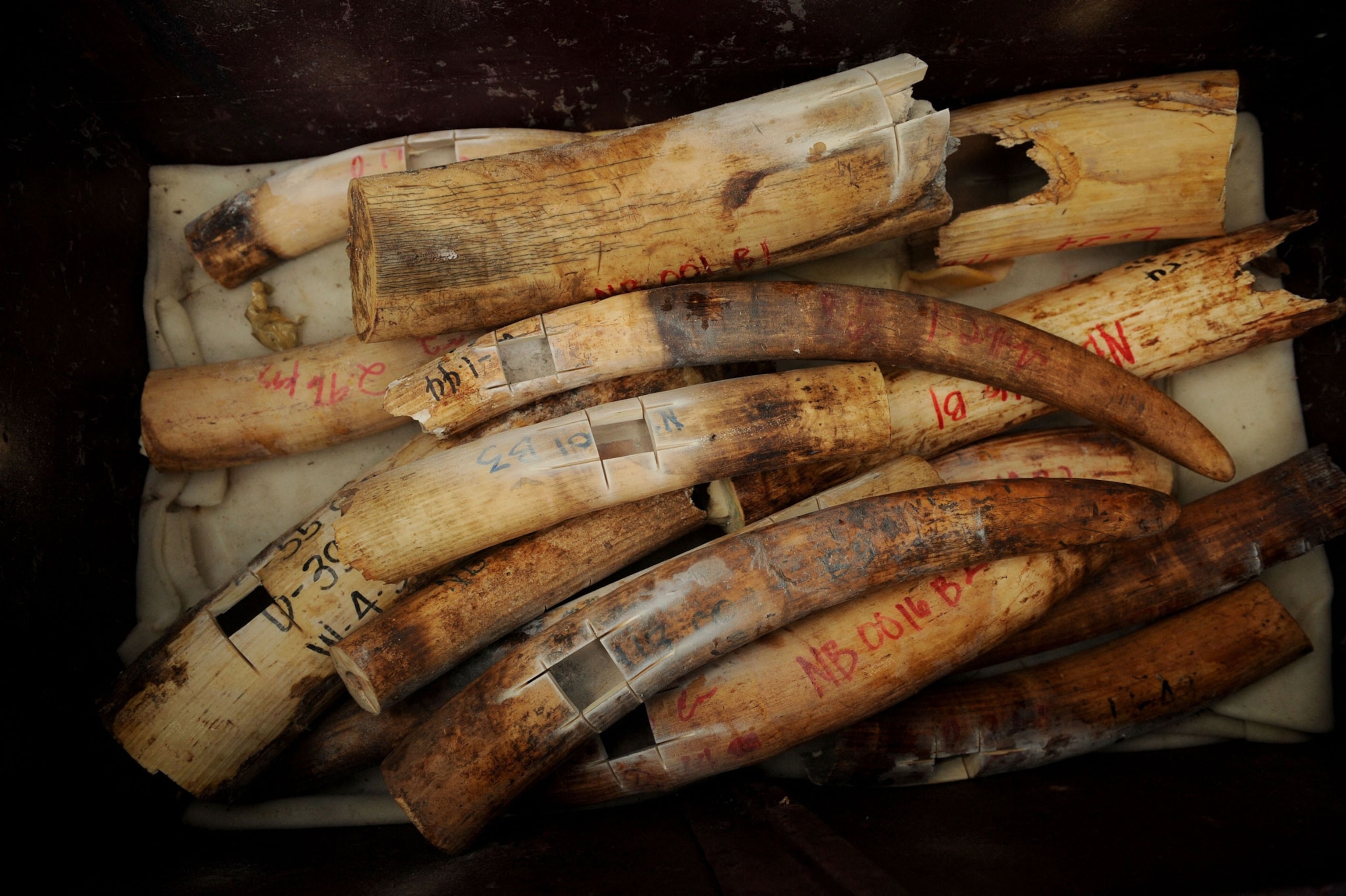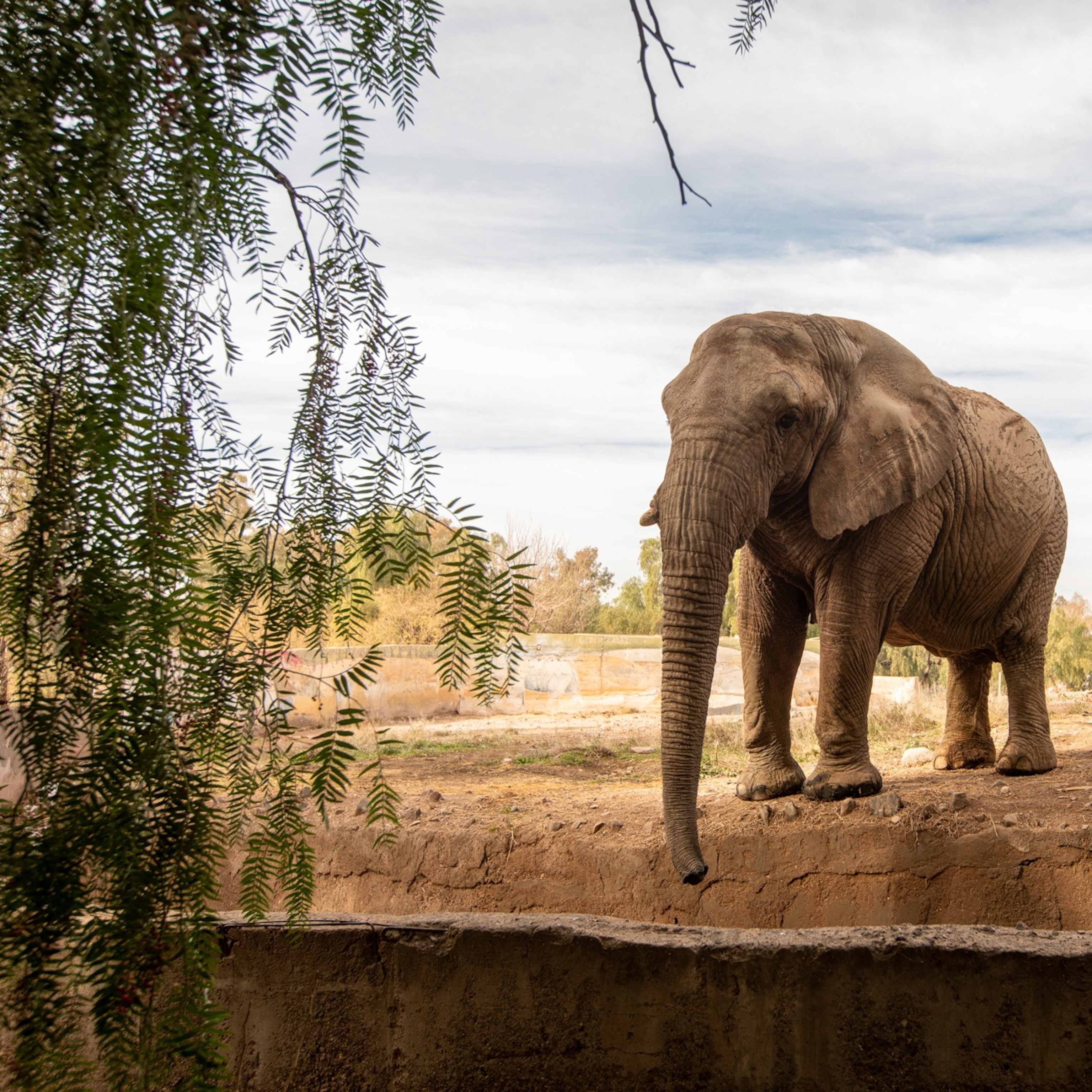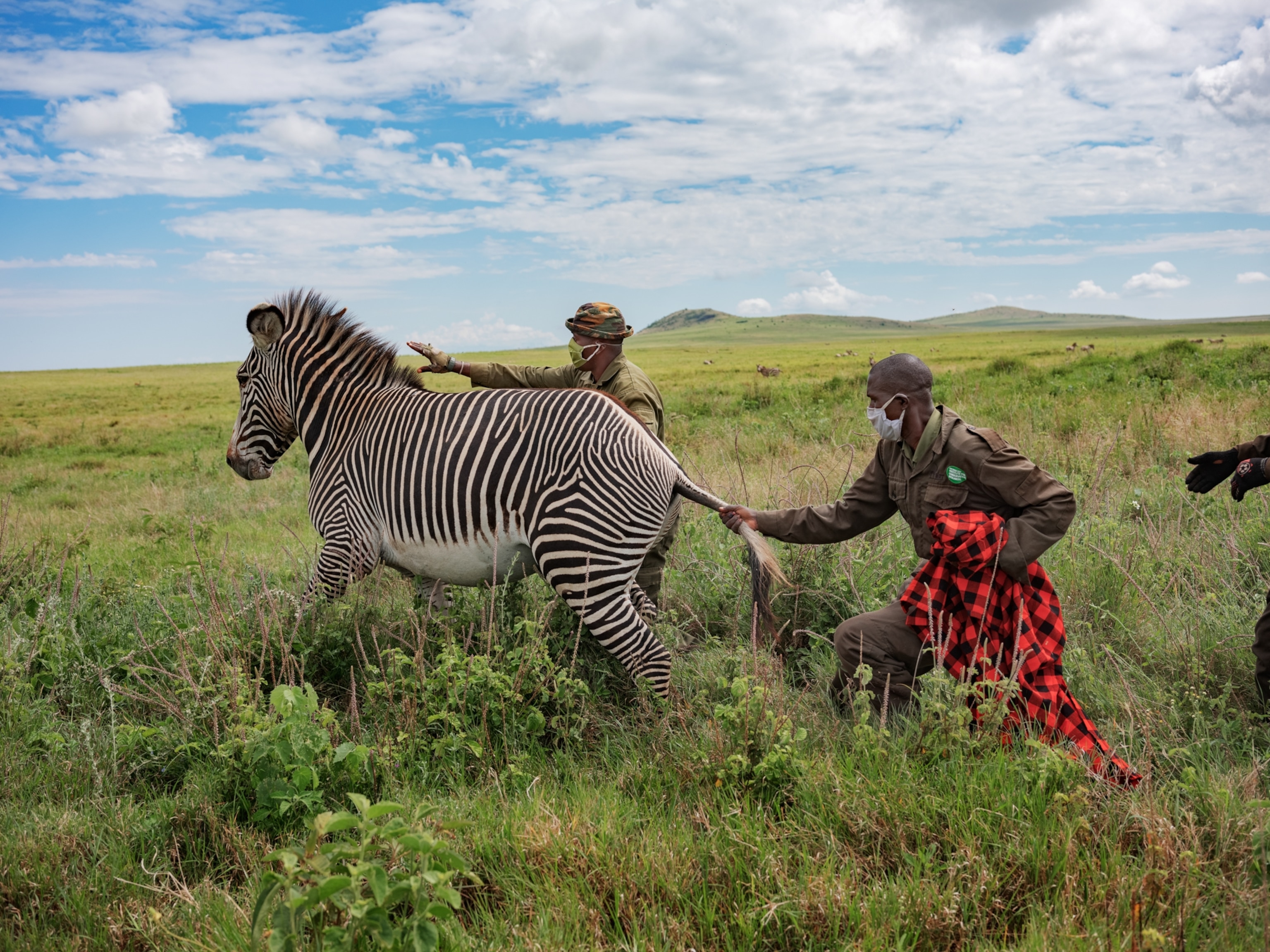
How the DNA method that caught the Golden State Killer can help catch elephant poachers
The technique has identified links among criminal syndicates, helping prosecute wildlife traffickers.
Acting on a tip in July 2019, Singapore authorities singled out a shipment of three containers of timber en route from the Democratic Republic of the Congo to Vietnam. Hidden among the wood, almost nine tons of chopped-up elephant tusks were packed in 132 heavy-duty plastic bags—the ivory of an estimated 300 African elephants. Inspectors also found nearly 12 tons of pangolin scales.
They immediately notified the port of origin as well as Interpol and Singapore’s National Parks Boards (NParks), responsible for administering the international treaty that governs cross-border wildlife trade. And then NParks dialed a professor in Seattle.
Samuel Wasser directs the Center for Environmental Forensic Science at the University of Washington, where in the early 2000s his team pioneered a method of comparing DNA from trafficked elephant tusks to tissue and scat samples from known forest and savanna elephants. The groundbreaking technique is used to approximate the geographic origin of illegal tusks, information that can be critical in identifying poaching hot spots and prosecuting poachers. (Read more about how tusks and scat can identify poaching hot spots.)
More recently though, Wasser has turned his attention to a larger target: the powerful criminal organizations that direct the ivory trade.
In a paper published in Nature Human Behaviour on February 14, Wasser and his colleagues demonstrate how a relatively new way of working with DNA—called familial matching—can reveal far more detailed information about links among poached elephants. That data, along with evidence such as phone records and shipping manifests, shows consistent patterns of illicit ivory movement from the point of poaching, along smuggling routes, and out of Africa. This information could help authorities prosecute not just individual poachers—a tactic that historically has done little to decrease poaching—but also dismantle the transnational criminal organizations that pay poachers and middlemen and that consolidate large amounts of ivory for export.
This new way of using existing data may be crucial for elephants’ survival. Poachers kill nearly 30,000 elephants each year, mainly to meet the demand in Asia for luxury products like ivory carvings, jewelry, and chopsticks.
How familial matching works
If familial DNA matching sounds familiar, that’s because it was the technique used in 2018 to catch the Golden State Killer, an infamous serial murderer in California who’d evaded law enforcement for more than 40 years. Instead of comparing DNA found at the crime scene with a reference sample from a suspect and hoping for a direct match, familial matching compares DNA from the crime scene to the DNA of a broad range of potential biological relatives whose DNA may be in public databases. A partial or “indirect” match can reveal family members, providing new leads for investigators trying to identify a suspect.
Similarly, because elephants live in close-knit family units, familial DNA matching of tusks allows investigators to track and map a far greater number of animals than did previous methods. Over the poaching-transport-trading timeline, tusks from a poached group of elephants often get split up. Using direct DNA comparisons, Wasser can connect a left tusk in one shipment to a right tusk in another. But with only an estimated 10 percent of poached ivory ever confiscated and the high cost of DNA analysis, finding exact matches between shipments relies mostly on luck: The odds of a perfect match are just nine percent.
Now, using familial matching, Wasser can sequence the DNA of a single tusk and compare it to the DNA of all the elephants in his database, which reaches back to 2002. Instead of searching for a single perfect match, he can identify any close family members whose DNA is in the database. For anyone bent on crushing a trafficking syndicate, the technique is a significant leap forward.
Making maps from DNA
After entering into his database all the tusk DNA from the 2019 Singapore seizure, Wasser and his colleagues began looking for close relatives of the new elephants, including parents, offspring, and full- and half-siblings. “Pretty soon each test has, instead of one match, a couple dozen,” Wasser said. As he compared new DNA with old, the branching lines on the family tree grew ever denser. From the 49 largest ivory seizures Wasser’s team has sampled, there were more than 600 familial matches, with almost 40 from the Singapore seizure alone.
This genetic evidence, paired with bills of lading, telephone data, and other information compiled by law enforcement agents in Africa and Southeast Asia, is helping researchers create elaborate color-coded maps that, Wasser said, “allow you to trace where [the tusks] are coming from, and their connections to other shipments.”
Investigators can then use the maps—one for each large ivory seizure—to better uncover the extent of major trafficking networks, as well as the links between them. In 2018, for example, Wasser’s team had identified three networks operating in Kenya, Uganda, and Togo. New analysis using familial DNA shows that not only are those networks involved with more ivory shipments than previously realized but also that they’re more linked to each other. This kind of information allows law enforcement to connect evidence from multiple investigations, revealing new leads and supporting prosecutions.
Maps made with DNA from four Malaysia seizures, two Angola seizures, and the Singapore seizure collectively indicate that since 2015, poaching hot spots have been shifting from Tanzania, Kenya, and Mozambique into the Kavango–Zambezi Transfrontier Conservation Area of southern Africa, where 230,000 of Africa’s remaining 400,000 elephants live.
Wasser’s team has also shown that the same international smuggling networks have been operating for a decade or more, providing revenue to poachers who return to the same places year after year, kill elephants’ extended family members, and send tusks in large consignments through export chains controlled by those same networks. The data suggest that a mere handful of networks, which may also traffic weapons and drugs, dominate the trade.
“They are the choke points,” Wasser said, “and there’s very few of them. Being able to take them out is really critical.”
The longer arm of the law
Wasser’s DNA database provides a powerful tool for investigators. But it can also help law enforcement strengthen prosecutions and stiffen prison sentences in countries where elephants are slaughtered or ivory is exported or seized.
Furthermore, Wasser’s Center for Environmental Forensic Science collaborates with Homeland Security Investigations (HSI), an arm of U.S. Immigration and Customs Enforcement, which investigates non-wildlife crimes associated with ivory trafficking that fall under U.S. jurisdiction.
“By following the connections identified through DNA analysis of multiple seizures, HSI is able to identify and investigate the underlying financial crimes and commercial fraud” by criminal networks, said John Brown III, a special agent in the Global Trade Division at HSI, in an email.
Successful prosecutions could include seizures of networks’ assets, shutting down the financial pipelines that fund poaching. The collaboration has already led to multiple ongoing investigations and at least one bust—the arrest and prosecution of two men who attempted to import elephant ivory, rhino horn, and pangolin scales to Washington State in November 2021.
Familial DNA analysis is also being used to help other trafficked animals, including Peter Ward’s work at the University of Washington using DNA samples from giant clams. And following the ivory seizure in 2019, Wasser’s team taught Singapore’s NParks how to do the expensive and time-consuming DNA sequencing and identification on its own. In August 2021, Singapore opened its own Centre for Wildlife Forensics, dedicated to identifying seized wildlife species, parts, or products—of plants as well as animals—and producing evidence that can support law enforcement and prosecution.
Currently working with seized pangolin scales, the center aims to “apply the same kind of methodology and hypotheses that Sam [Wasser] did with the ivory,” said Adrian Loo, group director for wildlife management at NParks. “We want to be the regional leader in using science to stop the illegal wildlife trade.”








